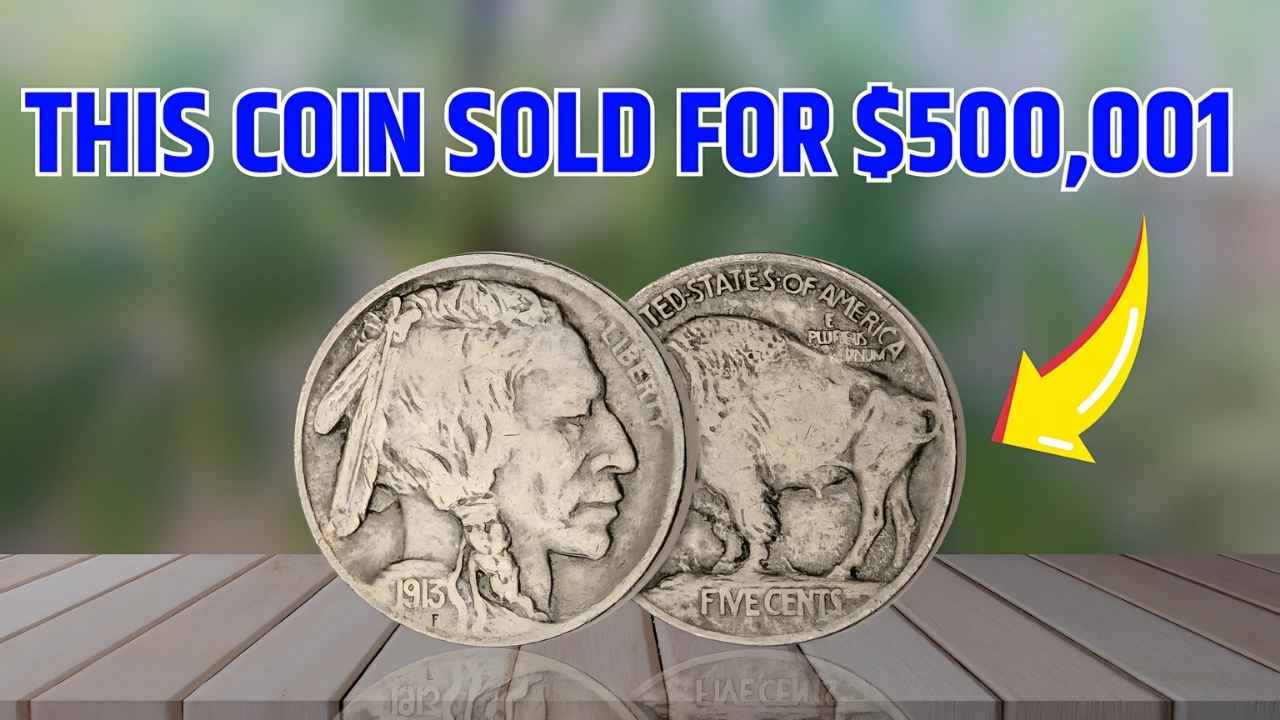Buffalo Nickel: An ordinary-looking coin, tossed around in pockets and drawers for years, has stunned collectors by selling for a staggering $500,001. This coin is a Buffalo Nickel—a five-cent piece once commonly used in everyday transactions. It may seem shocking that such a small coin could be worth so much, but as you’ll discover, there’s a lot more to the story than meets the eye.
What Is a Buffalo Nickel?
The Buffalo Nickel, also known as the Indian Head Nickel, was minted in the United States from 1913 to 1938. It features a Native American on the obverse (front) and an American bison—commonly referred to as a buffalo—on the reverse.
Designed by artist James Earle Fraser, the coin was meant to honor the American West and Native American heritage. It quickly became a favorite among collectors for its bold design and cultural symbolism.
Why This Coin Sold for $500,001
Not all Buffalo Nickels are created equal. While most are worth between 50 cents and a few dollars in worn condition, a few rare examples can be worth tens or even hundreds of thousands. The recent $500,001 sale was the result of a unique combination of rarity, condition, and historical importance.
Here are the key factors that influenced the coin’s high value:
1. Rare Minting Error or Variety
Some of the most valuable Buffalo Nickels feature minting mistakes, which are highly prized by collectors. One of the most well-known is the 1918/7-D overdate, where the number “8” was stamped over a “7.”
Another famous error is the 1937-D “three-legged” buffalo, where one of the buffalo’s legs is missing due to over-polishing of the die.
Coins with such unusual characteristics are extremely rare and can command sky-high prices.
2. Scarcity of Date and Mint Mark
Buffalo Nickels were produced at three U.S. mints: Philadelphia (no mint mark), Denver (D), and San Francisco (S). Some combinations of date and mint mark are especially rare, including:
- 1913-S Type 2
- 1926-S
- 1918/7-D overdate
These coins had low mintages or limited circulation, making them particularly desirable to collectors today.
3. Exceptional Condition and Grade
Condition plays a huge role in a coin’s value. Most Buffalo Nickels were heavily circulated, and finding one in mint state (MS) condition is uncommon. Grading services like NGC and PCGS assess a coin’s surface quality, strike, and eye appeal. Higher-grade coins receive better rankings, which directly increase their market value.
The $500,001 Buffalo Nickel was likely in pristine condition—possibly graded MS-66 or higher—making it a showpiece for any serious collector.
How to Spot a Valuable Buffalo Nickel
If you have a jar of old coins lying around, it might be time to take a closer look. Here’s how you can identify a potentially valuable Buffalo Nickel:
Step 1: Check the Date
Look for early years like 1913, or unusual dates such as 1918/7-D or 1937-D. If the date is worn off, the coin is usually worth less, but some dateless coins with rare errors still have value.
Step 2: Examine the Reverse
Flip the coin and check the bottom of the reverse side under “FIVE CENTS” for a mint mark. Coins from Denver (D) or San Francisco (S) can be more valuable than those from Philadelphia.
Step 3: Look for Errors
Use a magnifying glass to inspect for doubling of letters, missing features like legs on the buffalo, or overdates. These small details can dramatically increase the value.
Step 4: Get It Graded
If you believe you’ve found something rare, send it to a professional coin grading service like PCGS or NGC. A formal grade can validate the condition and boost its market value.
History and Legacy of the Buffalo Nickel
The Buffalo Nickel was introduced in 1913 to replace the Liberty Head Nickel. The early versions, known as Type 1, had the bison standing on a raised mound. Due to excessive wear, the design was modified later that same year to Type 2, where the mound was flattened.
Despite being discontinued in 1938, the Buffalo Nickel remains one of the most iconic and beloved coins in U.S. history. It has even inspired modern commemorative versions, such as the 2001 American Buffalo gold coin.




